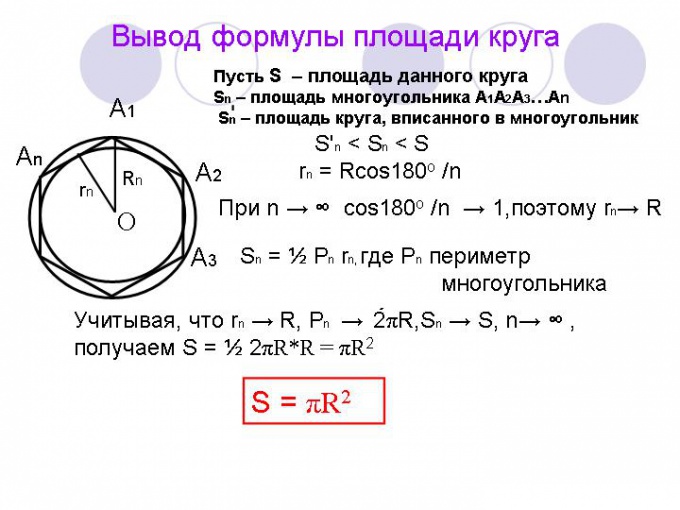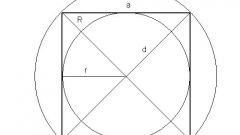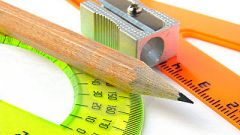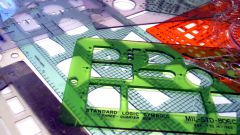You will need
- a calculator or computer, a ruler, tape measure, protractor
Instruction
1
To calculate the area of simple shapes using the appropriate mathematical formulas:
to calculate the area of a square, erected in the second level the length of its sides:
PCV = s 2,
where: Tor – the area of a square with length side;
to calculate the area of a square, erected in the second level the length of its sides:
PCV = s 2,
where: Tor – the area of a square with length side;
2
to find the area of a rectangle, multiply the length of its sides:
PPR = l * W,
where: PPR is the area of a rectangle, d and W, respectively, its length and width;
PPR = l * W,
where: PPR is the area of a rectangle, d and W, respectively, its length and width;
3
to find the area of a parallelogram, multiply the length of either of the parties on the length of the height lowered on this side.
If you know Dina adjacent sides of a parallelogram and the angle between them, then multiply the lengths of these sides by the sine of the angle between them:
Par = C1 * V1 = C2 * B2 = C1 * C2 * sinφ,
where: PPER - the area of a parallelogram
C1 and C2 are the lengths of the sides of a parallelogram,
B1 and B2, respectively, the length they descended the heights
φ – the angle between adjacent sides;
If you know Dina adjacent sides of a parallelogram and the angle between them, then multiply the lengths of these sides by the sine of the angle between them:
Par = C1 * V1 = C2 * B2 = C1 * C2 * sinφ,
where: PPER - the area of a parallelogram
C1 and C2 are the lengths of the sides of a parallelogram,
B1 and B2, respectively, the length they descended the heights
φ – the angle between adjacent sides;
4
to find the area of the rhombus,
multiply the length of side a length of the height
or
multiply the square of the sides of the diamond on the sine of any angle
or
multiply the lengths of its diagonals and divide the work into two:
Prob = C * V = C2 * sinφ = D1 * D2,
where: Prom is the area of a rhombus With side length, b is the length of the height, φ is the angle between adjacent sides, D1 and D2 be the lengths of the diagonals of the rhombus;
multiply the length of side a length of the height
or
multiply the square of the sides of the diamond on the sine of any angle
or
multiply the lengths of its diagonals and divide the work into two:
Prob = C * V = C2 * sinφ = D1 * D2,
where: Prom is the area of a rhombus With side length, b is the length of the height, φ is the angle between adjacent sides, D1 and D2 be the lengths of the diagonals of the rhombus;
5
to calculate the area of the triangle
multiply the length of side a length of the height and divide the product by two,
or
multiply half the product of the lengths of two sides the sine of the angle between them,
or
multiply properiter triangle on the radius inscribed in a triangle circumference,
or
extract the square root of the product of the differences of properiety triangle and each of its sides (Heron's formula):
PTR = * C / 2 = ½ * C1 * C2 * sinφ = n * R = √(p*(p-C1)*(p-S2)*(p-S3)),
where: and – the length of an arbitrary side and lowered to her height,
C1, C2, C3 be the lengths of the sides of a triangle
φ – the angle between the sides (C1, C2),
p – pauperised triangle: n = (C1+C2+C3)/2,
R is the radius of the inscribed in a triangle circumference;
multiply the length of side a length of the height and divide the product by two,
or
multiply half the product of the lengths of two sides the sine of the angle between them,
or
multiply properiter triangle on the radius inscribed in a triangle circumference,
or
extract the square root of the product of the differences of properiety triangle and each of its sides (Heron's formula):
PTR = * C / 2 = ½ * C1 * C2 * sinφ = n * R = √(p*(p-C1)*(p-S2)*(p-S3)),
where: and – the length of an arbitrary side and lowered to her height,
C1, C2, C3 be the lengths of the sides of a triangle
φ – the angle between the sides (C1, C2),
p – pauperised triangle: n = (C1+C2+C3)/2,
R is the radius of the inscribed in a triangle circumference;
6
to calculate the area of a trapezoid, multiply by the height of half the sum of the lengths of its bases
Ptrap = (C1 + C2) / 2 * A,
Ptrap – the area of a trapezoid, S1 and S2 – the length of the grounds, and In the length of the height of a trapezoid;
Ptrap = (C1 + C2) / 2 * A,
Ptrap – the area of a trapezoid, S1 and S2 – the length of the grounds, and In the length of the height of a trapezoid;
7
to calculate the area of a circle multiply the square of its radius by the number PI, approximately equal to 3.14:
PCR = π * R2,
where: R – the radius of the circle, π is the number "PI" (3.14).
PCR = π * R2,
where: R – the radius of the circle, π is the number "PI" (3.14).
8
To calculate areas of more complicated shapes, divide them into several disjoint more simple shapes, find the area of each and total the results. Sometimes the square shapes are easier to calculate as the difference between the areas of two or more simple shapes.





